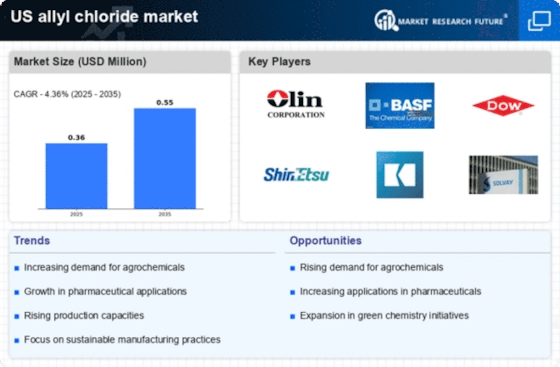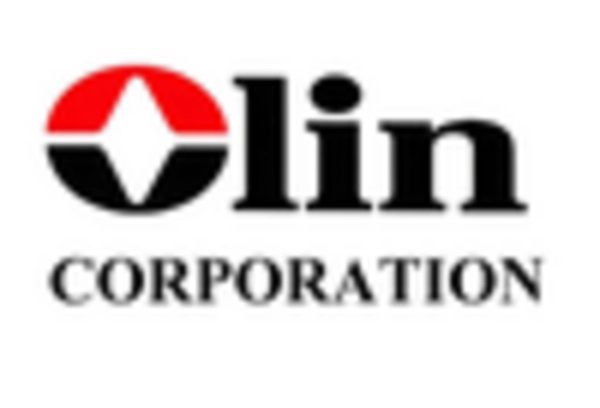Expansion of End-User Industries
The allyl chloride market benefits from the expansion of end-user industries such as agriculture, pharmaceuticals, and plastics. The agricultural sector, in particular, is witnessing a surge in demand for agrochemicals, which utilize allyl chloride as a precursor. The US agricultural market is projected to grow by 4% annually, leading to increased consumption of allyl chloride in the formulation of herbicides and pesticides. Additionally, the pharmaceutical industry is increasingly relying on allyl chloride for the synthesis of active pharmaceutical ingredients (APIs). This trend indicates a robust growth trajectory for the allyl chloride market, as it aligns with the rising needs of these critical sectors, ultimately driving market dynamics and fostering innovation.
Rising Demand in Chemical Synthesis
The allyl chloride market experiences a notable increase in demand due to its essential role in chemical synthesis. This compound serves as a key intermediate in the production of various chemicals, including plastics, resins, and pharmaceuticals. The market is projected to grow as industries seek efficient and cost-effective solutions for chemical manufacturing. In 2025, the market is expected to reach a valuation of approximately $500 million, reflecting a compound annual growth rate (CAGR) of around 5%. This growth is driven by the expanding applications of allyl chloride in the production of agrochemicals and specialty chemicals, which are increasingly utilized in the US. As a result, the allyl chloride market is poised for significant expansion, catering to the evolving needs of diverse sectors.
Growth in Specialty Chemicals Sector
The growth in the specialty chemicals sector is a significant driver for the allyl chloride market. Specialty chemicals, which are characterized by their unique properties and applications, are increasingly in demand across various industries, including automotive, electronics, and personal care. The US specialty chemicals market is projected to grow at a CAGR of 5% through 2025, creating a favorable environment for the allyl chloride market. As manufacturers seek to develop innovative products, allyl chloride serves as a vital building block in the formulation of specialty chemicals. This trend indicates a promising outlook for the allyl chloride market, as it aligns with the broader growth of the specialty chemicals sector, ultimately enhancing market opportunities.
Innovations in Production Techniques
Innovations in production techniques are significantly influencing the allyl chloride market. The introduction of more efficient and environmentally friendly manufacturing processes is likely to enhance production yields while reducing waste. For instance, advancements in catalytic processes and the use of renewable feedstocks are becoming more prevalent. These innovations not only lower production costs but also align with the growing emphasis on sustainability within the chemical industry. As a result, the allyl chloride market is expected to benefit from improved operational efficiencies, potentially leading to a market growth rate of 6% over the next few years. This shift towards innovative production methods may also attract new investments, further bolstering the market's expansion.
Increasing Regulatory Support for Chemical Safety
The allyl chloride market is positively impacted by increasing regulatory support for chemical safety and environmental protection. Regulatory bodies in the US are implementing stricter guidelines for chemical manufacturing, which encourages companies to adopt safer practices. This regulatory landscape is likely to drive demand for allyl chloride, as manufacturers seek compliant and safer alternatives for chemical production. The market is expected to adapt to these regulations, potentially leading to a 4% increase in market size as companies invest in safer production technologies. Furthermore, this regulatory support may enhance the reputation of the allyl chloride market, attracting more customers who prioritize safety and sustainability in their supply chains.

















Leave a Comment